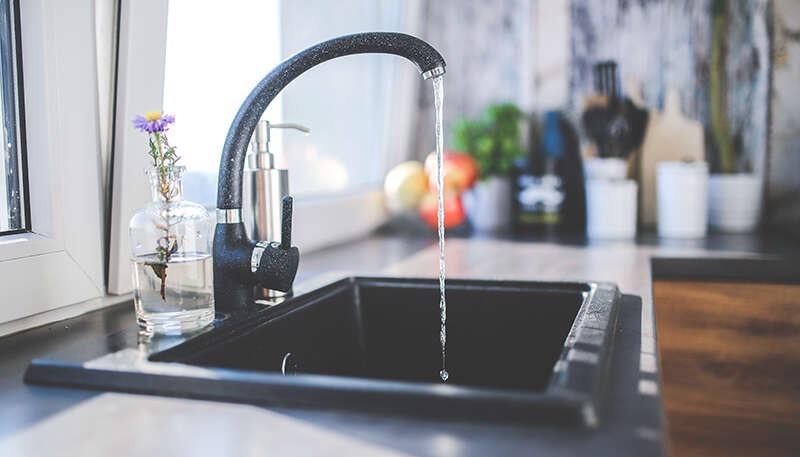The common use of lead as a material in plumbing dates back to the times of the Romans. Pliant and abundant, lead appeared to be the perfect material for transporting water into homes. That’s why many countries installed lead pipes for the transportation of drinking water – that was until scientific research proved that lead was harmful.
Lead ingestion over certain limits can result in damage to the brain, nervous system and kidneys, and is especially dangerous for young children and pregnant women.
Lead-containing water pipes are dangerous because they ultimately corrode, leaching lead into the drinking water supply at levels deemed unacceptably high.
In spite of regulation calling for the removal of lead pipes from the water supply, including the US banning of the use of leaded pipes and solder back in 1986 as part of the Safe Drinking Act, somewhere along the line, there are still a number of households serviced by lead pipes.
The Flint water crisis in the city of Flint, Michigan, serves as a prime example of this, where the city’s drinking water was contaminated with elevated levels of lead, exposing 100,000 residents to dangerous amounts of the metal and resulting in a comprehensive lead service pipe replacement program. This provoked national attention to the issue.

Image Credit: Hitachi High-Tech Analytical Science
Biden’s Plan to Replace All US Lead Water Pipes
On March 31, 2021, the Biden administration revealed their infrastructure plan, which includes the replacement of all lead drinking water pipes across the US to prevent drinking water contamination.
This goal is ambitious, with a target that aims to reduce lead exposure in up to 10 million homes, 400,000 schools and childcare centers with the support of a budget of $45 billion USD supplied by the EPA’s Drinking Water State Revolving Fund and in Water Infrastructure Improvements for the Nation Act grants.
However, implementing this plan is a real challenge. The principal issue, second to cost, is that water authorities and city administrations are not fully aware of the extent of the problem.
Without comprehensive maps that can signify which service pipes are lead and which are copper or steel, water authorities are only guessing at the costs and timeframes involved. Numerous lead service lines cross into private homes, complicating the issue further.
Why the Vulcan Handheld Laser Analyzer for Lead Pipe Identification is a Good Option
The Vulcan handheld laser analyzer resolves the primary issue of how to accurately detect if a service line is lead, copper or steel in a matter of seconds. The data can then be utilized for the mapping of residential and commercial areas where lead pipes are found in high concentrations.
The Vulcan is relatively compact, about the size and weight of an electric drill. Position the nose on a clean surface of the pipe, pull the trigger, and in just a few seconds, users are presented with a clear understanding of whether the pipe is made of lead, copper or steel.
The instrument is extremely strong and durable, and the battery’s long life means it can function for an entire day on just one full charge. The instrument can also be fitted with a camera for easy targeting of the measurement.
Unlike other lead detection methods, the Vulcan is powered by safe LIBS (laser induced breakdown spectroscopy) technology, meaning there are no chemicals or X-rays involved. The Vulcan offers clear numerical results and grade ID rather than just reaction based on color.
The Vulcan costs little to run, making it cost-effective when compared with chemical sets, and is also extremely user-friendly, meaning routine testing can be conducted by anyone quickly and safely with minimal training.
Handheld XRF as Another Option
X-ray fluorescence (XRF) is a proven, non-destructive technique that enables the determination of the elemental composition of various materials, including metal alloys, in seconds. The X-MET8000 handheld XRF analyzer can also be used for the determination of lead in water pipes and plumbing components.
Testing couldn’t be easier: simply position the nose of the analyzer on the component and press the trigger to measure. Results are quickly recorded and displayed, and the results display can be customized to display pass or fail messages when a given element is above or below a user-defined level (e.g., show FAIL if Pb > 0.25%), which facilitates quick decision making.
To accurately measure solders, the small-spot collimator option is available on the X-MET8000. It allows the solder material to be isolated from the pipe material, and the use of the camera facilitates the correct positioning of the analyzer on the solder joint.
Data Management
Another feature of Hitachi’s handheld analyzers is that they are equipped with sophisticated data and fleet management through full WiFi connectivity.
This means that users can record a measurement on-site and upload the results and location automatically to the ExTOPE Connect data management service. These results can be evaluated in a central location, enabling a full view of the scale of the pipe replacement work in almost real-time.
As many will attest, identifying if the pipe in the ground or inside a house is all lead, all copper or a combination can be a complex task. With several incomplete records or out of date, using Hitachi’s Vulcan handheld analyzer to provide an answer in just a few seconds could be part of the solution to the lead pipe problem.
Find Out More
To learn more about Hitachi’s handheld products and to see a demonstration of lead pipe testing, contact Hitachi High-Tech for a quote.

This information has been sourced, reviewed and adapted from materials provided by Hitachi High-Tech Analytical Science.
For more information on this source, please visit Hitachi High-Tech Analytical Science.